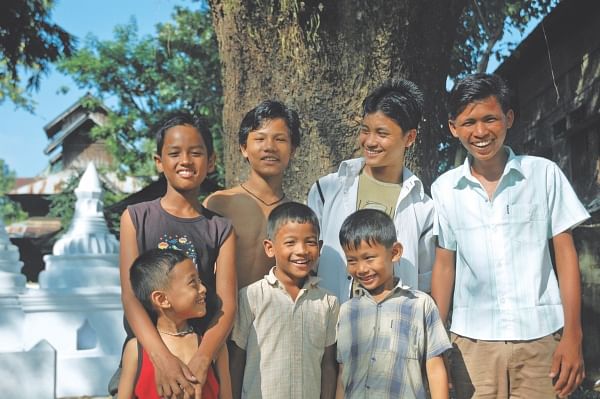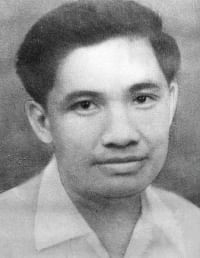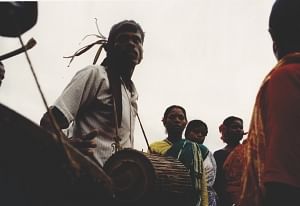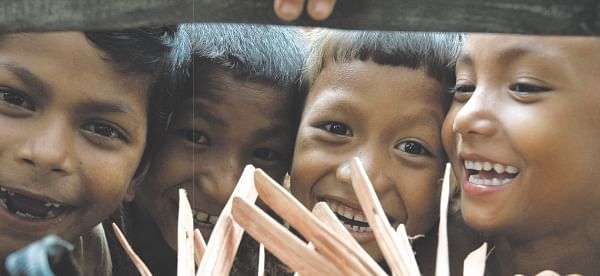| Home - Back Issues - The Team - Contact Us |
 |
| Volume 11 |Issue 08| February 24, 2012 | |
|
|
Special Feature Strangers in a Strange Land Sushmita S Preetha
As we celebrate another Omor Ekushey, we remind ourselves of the importance of language in forming and defining our identities. We pride ourselves for the way we resisted Pakistani imperialism and oppression, and we rejoice our refusal to bow down and assimilate to the then dominant culture. We recall how blessed we are now, to be able to speak, sing and write in our own mother tongue. Yet, we forget the plight of our very own non-Bengali communities, who are all but forced to give up their mother tongues, as a result of our hegemonic and oppressive language policies. There are as many as 45 different ethnic groups in the country. There is some controversy regarding the exact number of languages that are spoken in Bangladesh, but unofficial statistics suggest that there are at least 38 different language groups spread across different parts of the country. Bengali, however, remains the official state language, spoken and used by an overwhelming majority of the population. As such, we often mistakenly assume that Bangladesh belongs exclusively to us, the Bengalis, and in the process, we alienate all those who speak a different tongue than us. “I may not be Bengali, but I, too, am a Bangladeshi, entitled to the same rights and privileges as the rest of the population,” says Shushila Chakma, a student of Dhaka University. “I've always felt like an outsider, like I didn't belong, somehow. No one spoke my language, or understood my culture, and I had to struggle to fit in.” Shushila, like so many other people from indigenous communities, feels the burden of her complex identity. Marginalised by the state, and ignored by mainstream society, she wonders what it means for her to be a non-Bengali Bangladeshi citizen. Our ambivalent relationship with our non-Bengali communities predates our struggle for independence and our understanding of Bengali nationality. As Dr Amena Mohsin, Professor of International Relations at Dhaka University, states, “Language occupies a central position in the construction of nationhood of the Bengalis.” She explains that in the years preceding 1952, Bengali emerged as a counter-weapon to the imposition of Urdu and Pakistani culture. It became the symbol of secular nationalism and freedom, “acquiring an immensely emotive and political connotation for the Bengalis.”
The Bengali identity remained fundamental to the Liberation War of 1971. In our efforts to distinguish ourselves from the religious nationalist rhetoric of Pakistan, we chose the secular linguistic identity, Bengali, as the collective banner to unite different religious groups. As a famous liberation war poster proudly stated, “Bangla's Hindu's, Bangla's Muslims, Bangla's Buddhists, Bangla's Christians – We are all Bengalis.” But the truth is that we weren't all Bengalis. A large number of non-Bengali speaking groups took part in the war along with Bengalis, but their contributions were sidelined by the latter's nationalist zeal. After the formation of an independent state, the Bengali identity was further institutionalised through our constitution. Bengali was declared as the state language (Article 3), and it was decided that citizens of Bangladesh will be known as Bengalis (Article 6). Furthermore, it was stated that the “unity and solidarity of the Bengali nation [which derived] its identity from its language and culture...shall be the basis of Bengali nationalism” (Article 9).
Minority groups tried to protest this overt imposition of the Bengali identity on the rest of the population. MN Larma, the only non-Bengali parliamentarian at that time, challenged the constitution, saying, “You cannot impose your national identity on others. I am a Chakma not a Bengali. I am a citizen of Bangladesh, Bangladeshi. You are also Bangladeshi but your national identity is Bengali… They [Hill people] can never become Bengali.” Larma's protests fell on deaf ears, as Sheikh Mujibur Rahman himself called on indigenous communities to assimilate to the mainstream culture and to become “Bengali”. Since then, non-Bengali communities, which include indigenous groups but also other linguistic factions, like Urdu-speakers and Marwaris, have had to face constant discriminations, both at the state and societal level. It is apparent that much of the contentions in CHT and other adivasi areas, stems from our inability to acknowledge their identities and to respect their rights over the area's resources. Meanwhile, the Urdu-speaking community in Bangladesh, remains one of the most marginalised segments of Bangladeshi society, deprived of economic and social status. Since independence, consistent attempts have been made to assimilate the non-Bengali population into the mainstream. The attempt to impose Bengali on adivasi children at the expense of their own mother tongue has had particularly negative impacts on indigenous communities. Bengali is the language of instruction in all government educational institutions in Bangladesh. As a result, a majority of non-Bengali children receive education in a language that they do not understand properly. Sanjeev Drong, General Secretary of the Bangladesh Adivasi Forum, argues that imposing Bengali hinders these children's access to education. “When our children go to school at the age of 4 or 5, they don't understand anything – the instructions, the books or the teachers. They can't even answer how they are, in Bengali. They find themselves in an unfamiliar place, unfriendly environment. Slowly they lose interest in their studies,” he says. According to Save the Children, an estimated 55.5 percent of adivasi children aged 6-10 are not enrolled in school, thanks to the discriminatory nature of the current education system. The drop-out rate for adivasi children in the Chittagong Hill Tracts is almost 60%, which is considerably higher than the estimated national rate. These rates are alarming, especially given the already unequal status of indigenous groups in our society.
Our constitution guarantees the right to study in one's own mother tongue – a right that is regularly violated in the case of our minorities. The government has not, as yet, made any serious effort to provide primary education to indigenous children in their mother languages, despite repeated promises, as per Article 3 of the Parbattay Zila Parishad Act 1989 and Article 33 of the CHT Peace Accord 1997. The National Education Policy 2010 made a provision to make primary education more accessible for adivasi children, but so far, nothing has been implemented. Meanwhile, with the increasing use of Bengali, the practice of many indigenous languages has dwindled over time. Shugata Chakma, a development worker, says, “The local languages have become secondary for some people, who think that they need to learn Bengali in order to communicate and compete with Bengalis.” A number of indigenous languages have become extinct and/or endangered as a result of reduction in population in respective communities and neglect by successive governments. Kuruk, the language of Orao ethnic community, has already become extinct, whereas Khumi, Khiyang, Pankho Koch, Patra and Hajong languages, among others, have become endangered. "Each community has their own literature in spoken forms and they have poetry, songs and fairy tales. When a language is lost, a civilisation is lost. Indigenous knowledge and wisdom is lost, a culture's values are lost,” opines Sanjeev Drong. With no formal institutional efforts to preserve these languages, he fears that much of non-Bengali history, literature and language will be lost forever.
In many areas, Bengali settlement and forced development activities have altered the local community's lives and livelihoods, thereby impacting their linguistic practices. Pavel Partha, an ethnobotanist who has worked extensively in adivasi areas, argues that we should remember, recognise and analyse the complex histories behind the annihilation of a language and a people. He asserts, “We need to pay attention to the hegemonic pressure of a state that changes the linguistic pattern of a community. Often, discussions about preservation and bilingual education hide the real issue of exclusion and economic exploitation.” According to Partha, we need to stop state-sponsored violations against these communities before we can save their languages. “We need to ensure forest and biodiversity-based livelihoods of these communities; we need to stop land grabbing, Bengali settlement and infrastructure development activities without the informed consent of these people,” he adds. One can't protect a language without first protecting the rights and livelihoods of the people who speak the language. There are complex underlying political motives behind the continuous marginalisation of non-Bengali communities, which stem from the way we, as Bangladeshis, envision citizenship, belonging and identity. Throughout the history of this country, we have either delineated them as the inevitable “other” or sought to make them “more like us,” thereby making invisible their histories, literatures and identities. As we celebrate 21st February, we rightfully feel proud of our language, culture and history. But perhaps it's time that we acknowledge other linguistic groups and enable them to establish equal claims over the Land of the Bengalis. Copyright
(R) thedailystar.net 2012 |
||||||||||||




